

Collage: Vision WERK.BERG © Anna Firak
Perfect City Block - Archipel Berlin 2050
Starting from the Scenario WattLand 2050 it is zoomed into the ARCHIPELAGEO BERLIN 2050. The ARCHIPELAGO protrudes as one of many metropolitan regions from the WattLand. A city block on the Kurfürstenstraße will be the focus of the Berlin-Workshops and and Design Studio "Perfect City Block - Archipel Berlin 2050".
The Task was to develop a future scenario for the block along defined extreme influencing factors. To do this, the students dealt with the status quo by performing a spatial, cultural and social analysis of the block as well as of the surroundings. Based on these information they tried to sharpen their outlook and as a next step formulate the Archipelago Berlin 2050 and first thoughts concerning spatial interventions, which resulted in their individual studio design projects. They should be realised in the now and function at the same time in 2050 WattLand-Szenario. In the course of this the students should speculate about survivability, financing, maintaining, energy supply and mobility.
Students: Costanza Coletti, Anna Firak, Julius Jell, Judith Kinzl, Hannah Kordes
Tutors: Matthias Böttger, Franz Koppelstätter und Katharina Weinberger
Department: die Architektur, Sustainable Architecture + Spatial Tactics
Schedule: Final presentation Perfect City Block
Kunstuni Linz
Figure-ground diagram: Perfect City Block Berlin
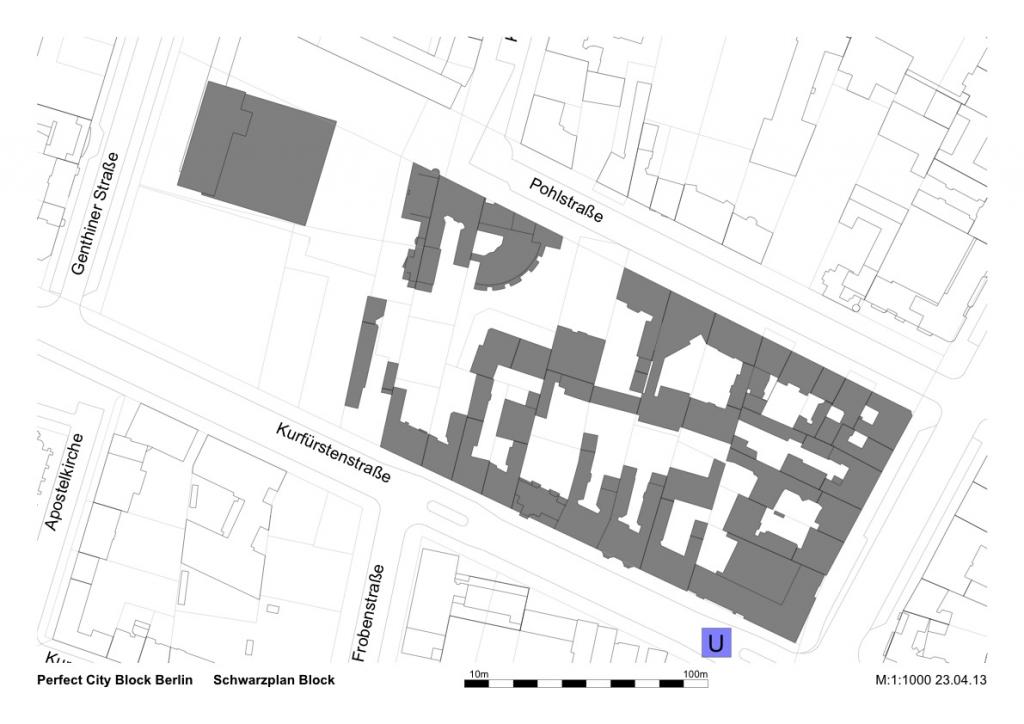
On-site pictures
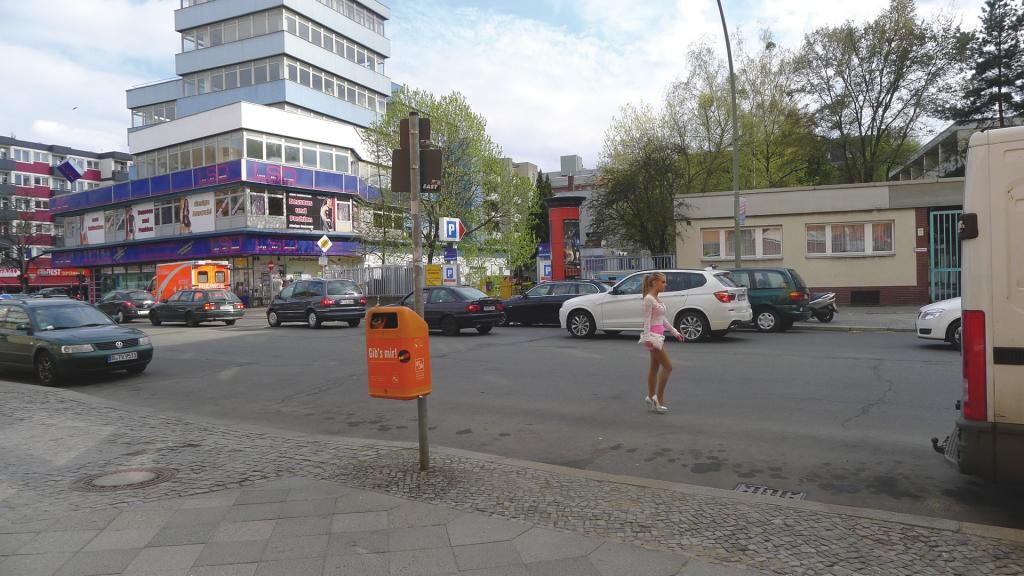
Photo: Kurfürstenstraße on the corner of Postdamer Straße

Photo: View of Möbel Hübner, Kurfürstenstraße at the corner of Genthiner Straße © Hannah Kordes
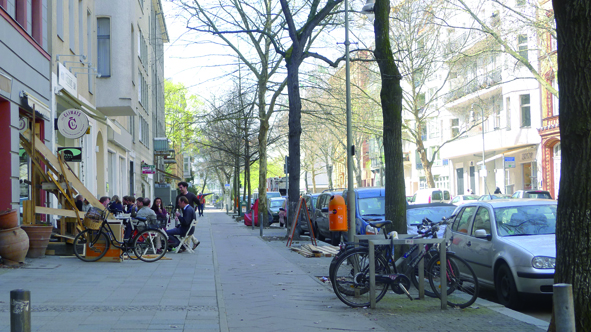
Photo: Pohlstraße © Costanza Coletti
Design Studio Projects of Students
Neuron
Reside always, everywhere and cheap - A model for urban housing of the future
Project of Judith Kinzl
A dwelling, that is all the time everywhere and customised available - ready to reside. Similar to parasites they employ existing buildings and form a dense sometimes loose network. The Neuron is a model for housing in the future city.
Booklet Neuron (in german)
Vertikale Kommune (vertical commune)
Collective appropriation of vacancy as a future strategy
Project of Hannah Kordes
The project of "Vertikalen Kommune“ explains by the example of the a fictional community and their protagonists, how new lebensraum in the city is developed and converted. The appropriation of vacancy as well as the establishment of a self-sufficient life-style as a strategy of surviving in a growing city of the future.
Booklet Vertikale Kommune (in german)
Space Invaders
How Density can make the City
Projekt von Costanza Coletti
The popular city of Berlin solved the challange of a rapidly increasing number of inhabitants by publishing a manual for self-made architecture. This was the beginning of life between, in and above the existing buildings. Followed by 3D-printed globulis that spread allover any empty space left. This caused a totally new landscape of a digitalized and de-territorialized common world.
Booklet Space Invaders (in german)
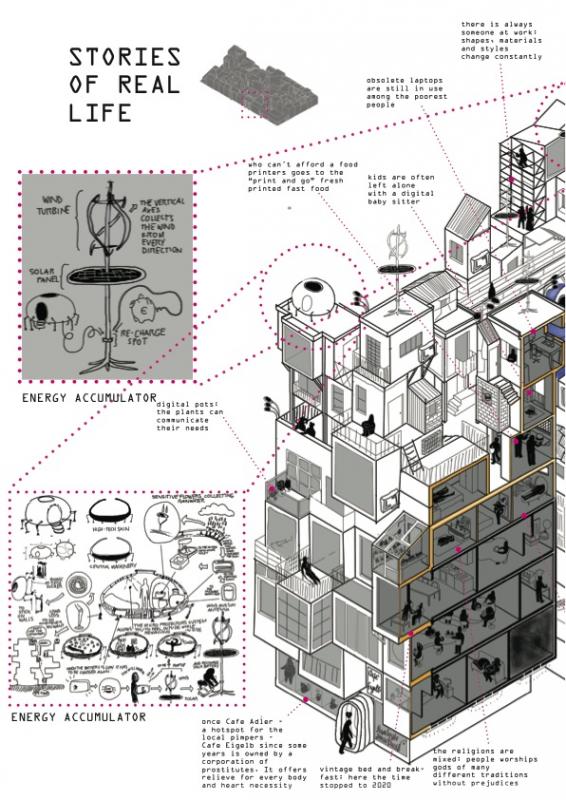
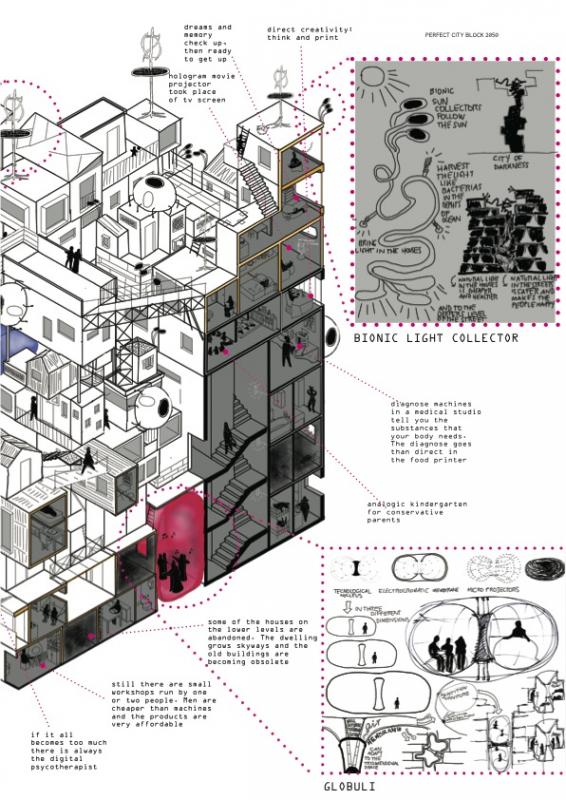
Axonometric section © Costanza Coletti
Stadt über Stadt (City about City)
A future vision to densify the city in high quality
Project of Julius Jell
The ongoing mentality of squanderers led to a great depression in Berlin, which implied the flight of the well-heeled to the country and at the same time brought along the "urban loosrs". The development concept of the vertically expanded "housing shelves" allows the city dwellers to lead an autonomous life in the city. The elaborated steel structure provides living room and space for production of bioenergy.
Booklet Stadt über Stadt (in german)
WERK.BERG (mountain factory)
An inhabitable compost heap
Project of Anna Firak
A factory that transforms all litter, which is not otherwise recycled, into fresh and fertile soil. The factory is an invention by the inhabitants of the Kurfüstenstraße and by doing this they create a green oasis, fresh air, home-grown food and new accommodations for an self-sufficient and perfect City Block in Berlin.
Booklet WERK.BERG (in german)